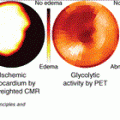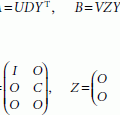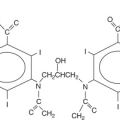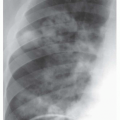Today’s fast-moving housing market is mainly driven by design. A property is shown long before it is bought; the way a property is presented influences buyer decisions. The open house flyer you choose can (and should) pique interest, bring people in, and almost force closing. Unlike generic marketing materials, which, although their use is not new, still need specific design elements alongside targeted messaging for real impact, real estate flyers need to be very precise.
Open-house flyers must work better than just looking pretty. All the essential pieces of information should be easily communicated: property details, price, time and place. They ought to project a sense of professionalism. As such, digital tools like Pippit are a necessity for real estate agents. AI allows Pippit to give you speed and style in creating visual content tailored to your needs.

What Makes a Great Real Estate Flyer?
The best flyers have a few core traits. First, they give you this property information in a neat package: square footage, number of bedrooms and baths, pricing, etc, as well as notable features like pools or recent renovations. Potential buyers should get a sneak peek of the home the instant they view the poster.
Effective flyers also contain time-specific information. A separate descriptive “Open House Sunday, 1–4 PM” is much more exciting than the general ‘Available Now’ message. Calls to action like ‘Tour Today’ or ‘RSVP for a Walkthrough’ cause immediate response and conversion.
Finally, the layout matters. It should be interesting but not overwhelming. Professional fonts, functional white space and how to visualize the property will keep the buyer’s attention where it should be: on the property itself.
Design Needs Unique to the Real Estate Sector
Real estate flyers aren’t one-size-fits-all. They require thoughtful balance between multiple design elements. For instance, property flyers need room for several photos—exterior shots, interior highlights, and even drone views. Maintaining visual harmony while displaying many images can be challenging, but it’s essential to give buyers a complete picture.
Branding is another key factor. Whether you’re part of a large agency or working as an independent agent, your flyer should reflect your brand’s colors, tone, and identity. This consistency builds trust and recognition over time.
Additionally, logistical elements like maps, open house timings, QR codes for virtual tours, and agent contact information must be seamlessly integrated. These details help buyers take immediate action and create a bridge between digital marketing and physical walk-ins.
How to Make a Poster Online with Pippit
Step 1: Generate a custom poster online
Start by logging into your Pippit dashboard. Navigate to the “Image studio” and select the “Sales poster” tab. From there, you can choose a real estate-specific template or enter your own prompt, highlighting the home’s features and location. Adjust the format depending on whether you’re creating a print flyer or a digital version for social media. Upload property images to personalize the flyer further and hit “Generate.”
Step 2: Refine & polish your posters
Once your poster is generated, fine-tune it using the intuitive editor. Choose clean visuals using the AI Background feature, or upload high-definition photos of the property. Edit the headline, price, and contact information under the Text Style section. These refinements help make your flyer more readable and visually appealing without losing professional polish.
Step 3: Export your posters
After finalizing your design, preview the completed flyer. When it looks perfect, export it in high resolution. Now it’s ready for print, email, or listing site uploads. The result is a flyer that looks professionally made—without needing a graphic designer.
Using Pippit to Create Property-Driven Visuals
Real estate flyers must reflect more than just appearance—they must sell the story. By uploading property photos and using strategic AI prompts, you can tailor visuals to emphasize location, design, pricing, or recent upgrades. Highlight what makes the listing special.
With Pippit, you can also auto-generate persuasive calls to action like “Schedule a Visit” or “See This Property Before It’s Gone.” These short, clear prompts guide viewers toward immediate action.
Enhancing Local Appeal with Custom Design Elements
Location matters in real estate—and your flyer design should reflect that. Add custom backgrounds that represent the neighborhood vibe, whether it’s a suburban park or downtown skyline. Insert logos, agency names, and clickable buttons to boost credibility.
Real-time edits let you update details like price changes, status updates, or showing times without starting from scratch. This flexibility keeps your flyers accurate and relevant even in fast-moving markets.
Offline and Online Flyer Use in Real Estate
Once your design is ready, you can prepare it for multiple channels. Print it for display at community boards, open house signage, or direct mail campaigns. Export it for use on Facebook, Instagram, or property listing websites.
A good poster maker ensures that your marketing stays consistent across platforms. Use matching designs for print and digital materials to create a unified campaign. This approach not only looks polished but also increases trust and visibility.

Conclusion
Pippit empowers real estate agents and brokers with a fast, effective way to create marketing flyers that look professional and perform well. In a market where first impressions count, polished visuals help listings stand out.
Every flyer is an opportunity. With AI tools and a creative platform like Pippit, it’s easy to make that opportunity count. Tailored messaging, high-quality images, and thoughtful design can turn a simple flyer into a powerful sales tool. In real estate, those details make all the difference.
Stay updated, free articles. Join our Telegram channel

Full access? Get Clinical Tree








